

Hidden among the most authentic folds of the Belluno Dolomites, the Comelico Valley reveals itself as a discreet and precious treasure. Surrounded by an amphitheater of breathtaking peaks, including Mount Popera, Croda Rossa, Cima Undici, the Brentoni and Mount Peralba, this valley preserves the purest soul of the mountains. It is a place where nature manifests itself in all its power and delicacy: dense fir forests, meadows as far as the eye can see, lonely alpine pastures, and amazing biodiversity. But Val Comelico is much more than a picture-postcard landscape: it is a living land, where history is intertwined with culture, where villages proudly guard their past and where traditions are proudly renewed.
An extraordinary and protected natural environment
The landscape of the Comelico Valley is one of its greatest protagonists. The Dolomite peaks that surround the valley-recognized as a UNESCO World Heritage Site-create an imposing yet harmonious backdrop. Among the most iconic mountain groups are the Popera group with Cima Bagni, Cima Undici and Croda Rossa, Monte Aiarnola, the Cresta di confine with Monte Cavallino and Cima Vallona. Added to these are the Tre Terze, Mount Rinaldo, the Longerin group, Palombino, and the ridge that closes Val Visdende, dominated by Mounts Vancomun and Peralba. In this grandiose setting stretch centuries-old forests and pastures that preserve the balance of an intact ecosystem, perfect for those who wish to experience the mountains in their most authentic meaning.
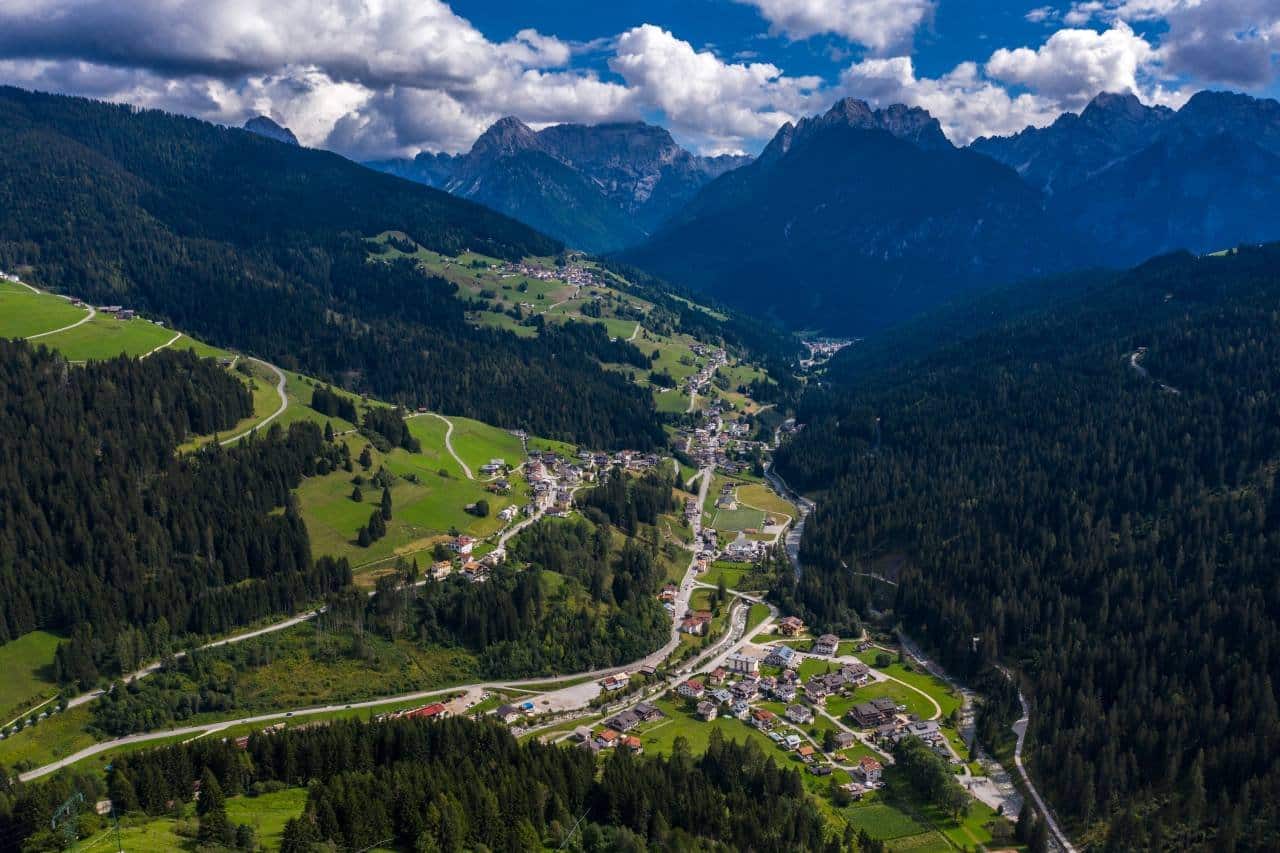
View of the lower part of the valley
A world of authentic experiences
The Comelico Valley is an invitation to explore, to discover, to breathe. Walking along the Alte Vie trails, such as the “Dolomites without Borders” route, which crosses ridges and mountain passes between Italy and Austria, means rediscovering the ancient fascination of travel on foot. Adrenaline junkies will find their fill in the area’s via ferrata trails, particularly the Strada degli Alpini, which provides thrills in breathtaking scenery.
Riding a mountain bike or e-bike, you can travel the entire valley along trails that pass through alpine pastures and centuries-old forests, such as the Dolomiti Trail loop. In winter, the snow turns the valley into a paradise for alpine and Nordic skiing, with more than 150 routes for ski mountaineering and 54 km of trails for cross-country skiing. Also not to be missed is the thrill of dog sledding, sustainable fishing in the valley’s clear streams, or a horseback ride immersed in the quiet of the forest. And for those who want to regenerate body and spirit, Val Comelico is also an ideal place for silvotherapy, meditation and yoga in nature.
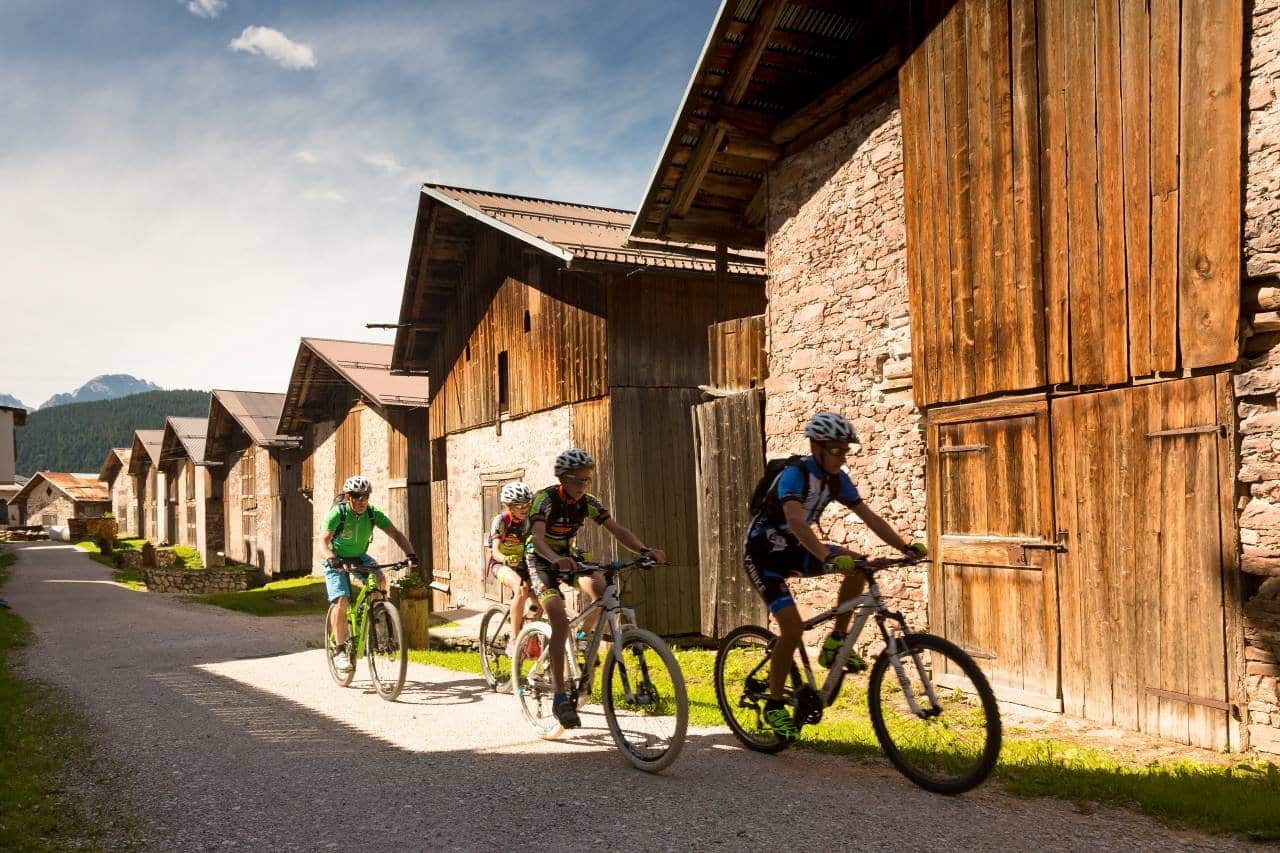 The way of the barns in Dosoledo di Comelico Superiore
The way of the barns in Dosoledo di Comelico Superiore
The flavors of tradition
Among the sensory experiences to be had, the gastronomic one holds a place of honor. Casunziei, typical ravioli made with soft flour and potatoes, are the signature dish of local cuisine. Each town maintains its own recipes and variations in the filling, but the taste is always faithful to the simplicity and authenticity of tradition.
The villages of the Comelico Valley: the living heart of the area
The true soul of Val Comelico can be found in its villages, authentic treasure troves of history, architecture and culture. Prominent among them is the municipality of Comelico Superiore, located on the northern edge of the Province of Belluno, on the border with the Autonomous Province of Bolzano and Austria. The municipality consists of four main villages – Padola, Dosoledo, Candide and Casamazzagno – and three picturesque hamlets: Sacco, Sega Digon and Sopalù, which harmoniously complete the landscape and human picture of the area.
Candide is the oldest nucleus: as early as 1186 the feudal lords of Cadore, the Conti da Camino, stipulated the deed of sale of Mount Ombrio to the inhabitants of the hamlet. Several times struck by fire, Candide has always been reborn on its splendid panoramic location. The heart of the village is the church of Santa Maria Assunta, rebuilt in the 18th century to a design by Felice Del Fabbro. Next to it stands the small church of Sant’Antonio Abate, built in the 16th century by Mastro Nicolò Ruopel, “murador de Carnia.” Among the most significant buildings are the severe 17th-century Casa Gera and Casa Giacobbi, evidence of the old local nobility.
Casamazzagno, located above Candide on the slopes of Mount Spina, offers breathtaking panoramic views. At the top of the village stands the Church of St. Leonard the Elder, built in 1545 by Ruopel. In the locality of “Strapilu” are charming wooden tabiàs, one of which dates back to the 1600s. In the center of the village, on the other hand, is the neoclassical church of San Leonardo Nuovo (1870) and the Ethnographic Museum set up by the cultural club “La Stua.”
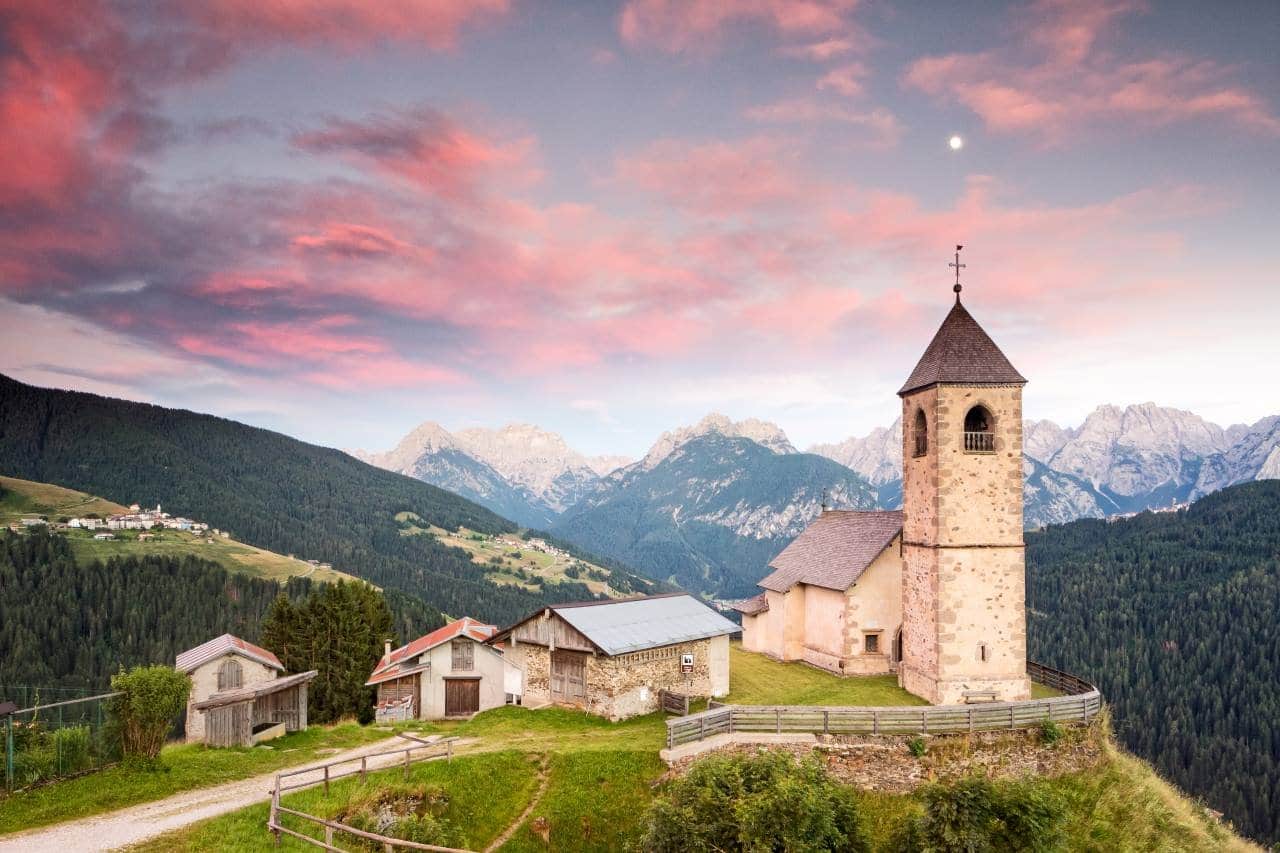
The Church of St. Leonard in Casamazzagno
Dosoledo, devastated several times by fires, was rebuilt between 1857 and 1874 according to refabrication plans that included masonry buildings, but it still retains some splendid wooden dwellings typical of Cadore. The shield-shaped plan of the settlement testifies to the ancient desire for protection. The church of SS. Rocco and Osvaldo, designed by Segusini, was built in 1844 and consecrated three years later; inside it contains frescoes by Giovanni De Min and works by Brustolon. In the center of the village stands the fine 17th-century Zandonella Dall’Aquila palace.
Padola is today the main ski resort in the valley. After a devastating fire in 1845, it was the first village in Cadore to be rebuilt in its entirety according to a modern town-planning scheme in the shape of a St. Andrew’s cross. The church of San Luca Evangelista dominates the central square and contains works by Tomaso Da Rin and Cesare Vecellio. Nearby are the small church of Madonna delle Grazie (1859), and that of Sant’Anna (1699), along the road to Passo S. Antonio. Padola is also home to the Comelico Museum of Alpine Culture, an important cultural landmark.
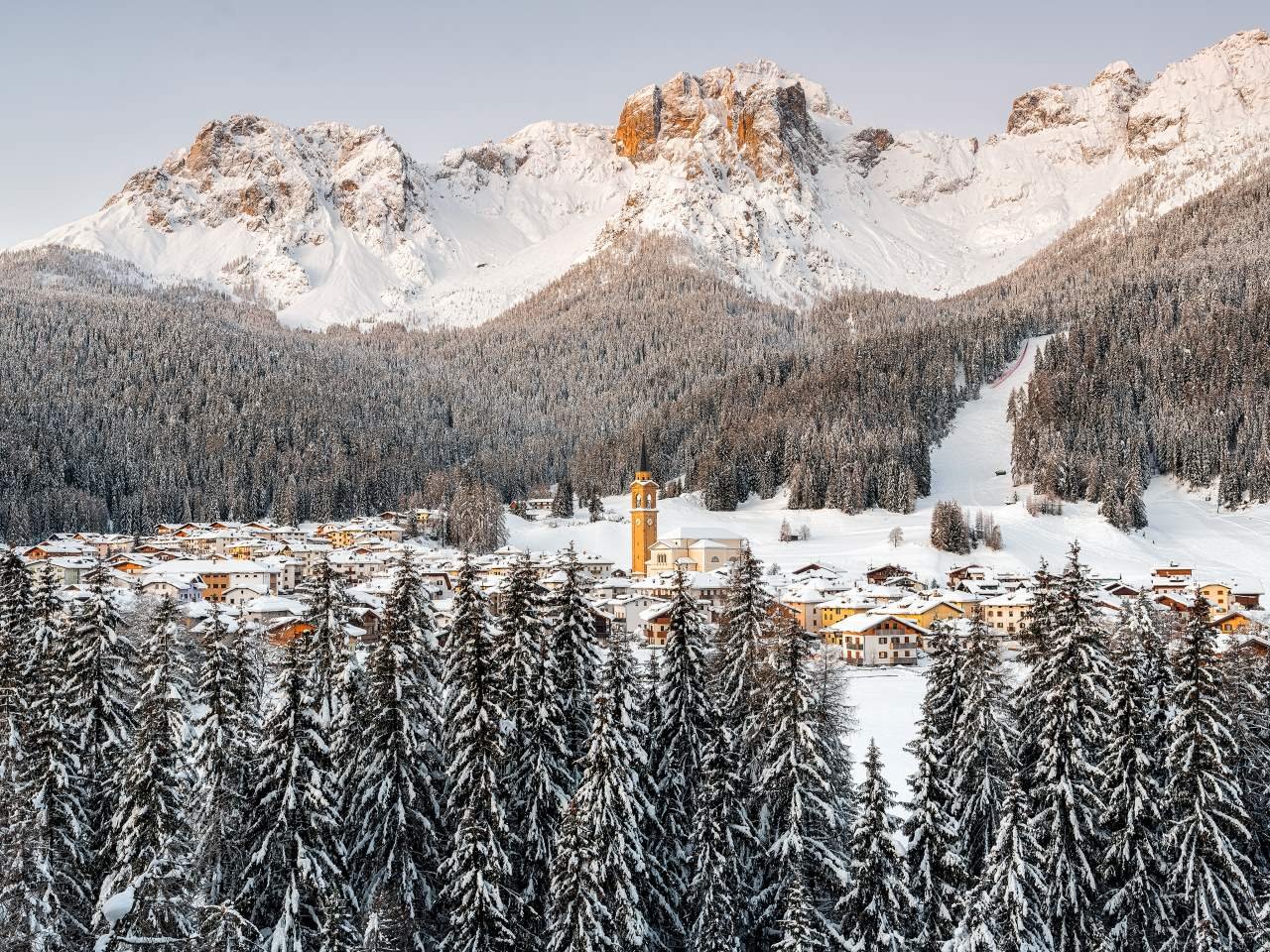
Padola di Comelico Superiore in winter
The other municipalities that make up the valley add just as much richness to the cultural and landscape mosaic of the Comelico Valley, each with its own identity, its own treasures to discover and a history rooted in the centuries.
Danta di Cadore, located at an altitude of 1396 meters, is in a privileged position, halfway between Cadore and Comelico. Its territory, exposed to the sun and surrounded by an intact natural environment, is a true refuge for those seeking silence and authenticity. Although it became an autonomous municipality only in 1843, Danta has very ancient origins: the first settlement dates back to the 6th century AD, founded by people from Pusteria fleeing barbarian invasions. The place name changed several times over the centuries from “Anananto” in 952 to “Antla” and finally “Danta.” The village today is a calm and charming place with traditional dwellings and an atmosphere suspended in time. The Paleontological Museum “The Roots of Life,” in the center of the village, preserves fossil finds of great scientific value, including the skeleton of one of the oldest dinosaurs ever found. From the small church of St. Barbara, set in a panoramic position, there is an extraordinary view of the Dolomites and the valley. The parish church of Sts. Rocco and Sebastian holds an altarpiece depicting the Madonna, attributed by some scholars to Francesco Vecellio, brother of the famous Titian. Just outside the village is the area of the Torbiere, high-altitude wetlands extraordinarily rich in biodiversity, which can be explored on an easy, scenic walk suitable for the whole family.
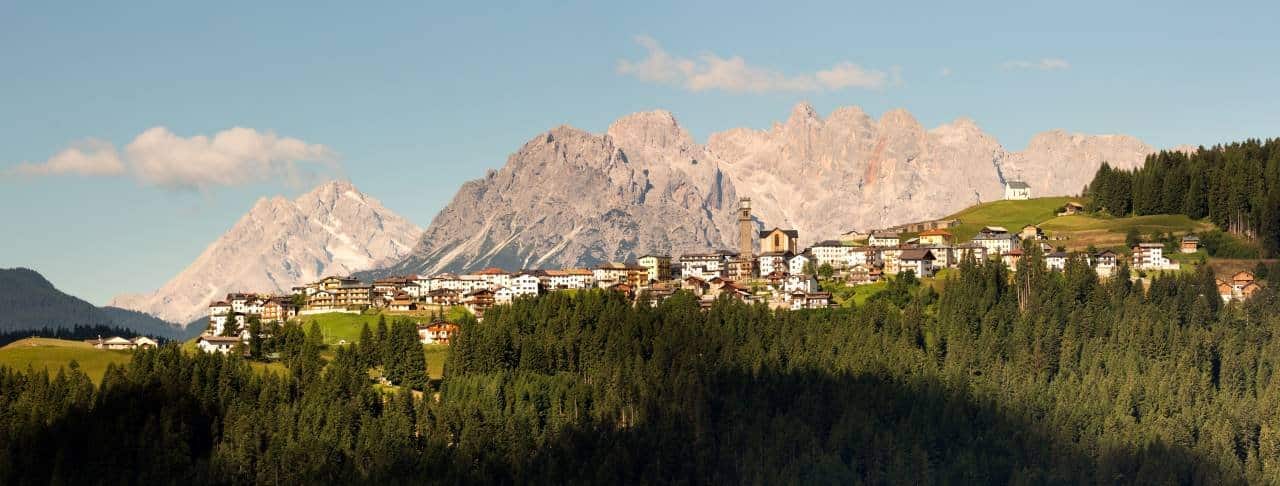
Danta di Cadore
San Nicolò di Comelico lies at 1062 meters above sea level, in a green basin surrounded by the peaks of the Popera group and Mount Zovo. Its main hamlets are Campitello, Lacuna, Gera and Costa, and the entire area retains a strong religious and cultural identity. The parish church, dedicated to St. Nicholas the Bishop, dates back to the 12th century and preserves valuable frescoes and works of art inside. In Gera, the center of a local noble family, is the elegant Casa Vettori, with the adjoining small church housing the remains of Santa Giulia, a gift from Cardinal Costantino Patrizi to Baroness Cecilia Colissis. A deeply evocative place is found in the locality of Cappella Tamai, where stands the Chiesetta Caduti di Cima Vallona, built in memory of all the soldiers who fell defending the borders of Italy.
Santo Stefano di Cadore is the administrative and commercial heart of Comelico. It rises 908 meters above sea level, in a strategic position at the confluence of the Padola stream with the Piave River. In addition to the main town, the municipality includes the hamlets of Campolongo, Costalissoio and Casada, as well as several smaller villages. Historically linked to the timber trade, it is now also an ideal destination for those who wish to combine nature, sports and culture. The church of Santo Stefano, of very ancient origin, has undergone numerous interventions over the centuries that testify to the evolution of sacred art. In the hamlets there are other places of interest: the small church of SS. Lorenzo and Osvaldo in Casada, the 14th-century church of SS. Giovanni and Filippo in Campolongo, rebuilt in the 18th century by the architect Segusini, and the Luigi Regianini Museum of Surrealism in Costalissoio, a small town set in a panoramic position. The nearby Val Visdende, a vast flat area on the border with Austria, is a sanctuary of nature, with centuries-old forests and the famous “resonance firs,” valuable for making musical instruments. Another remarkable place of fascination is Val Frison, rich in natural beauty and historical memories, including forts from the Great War.
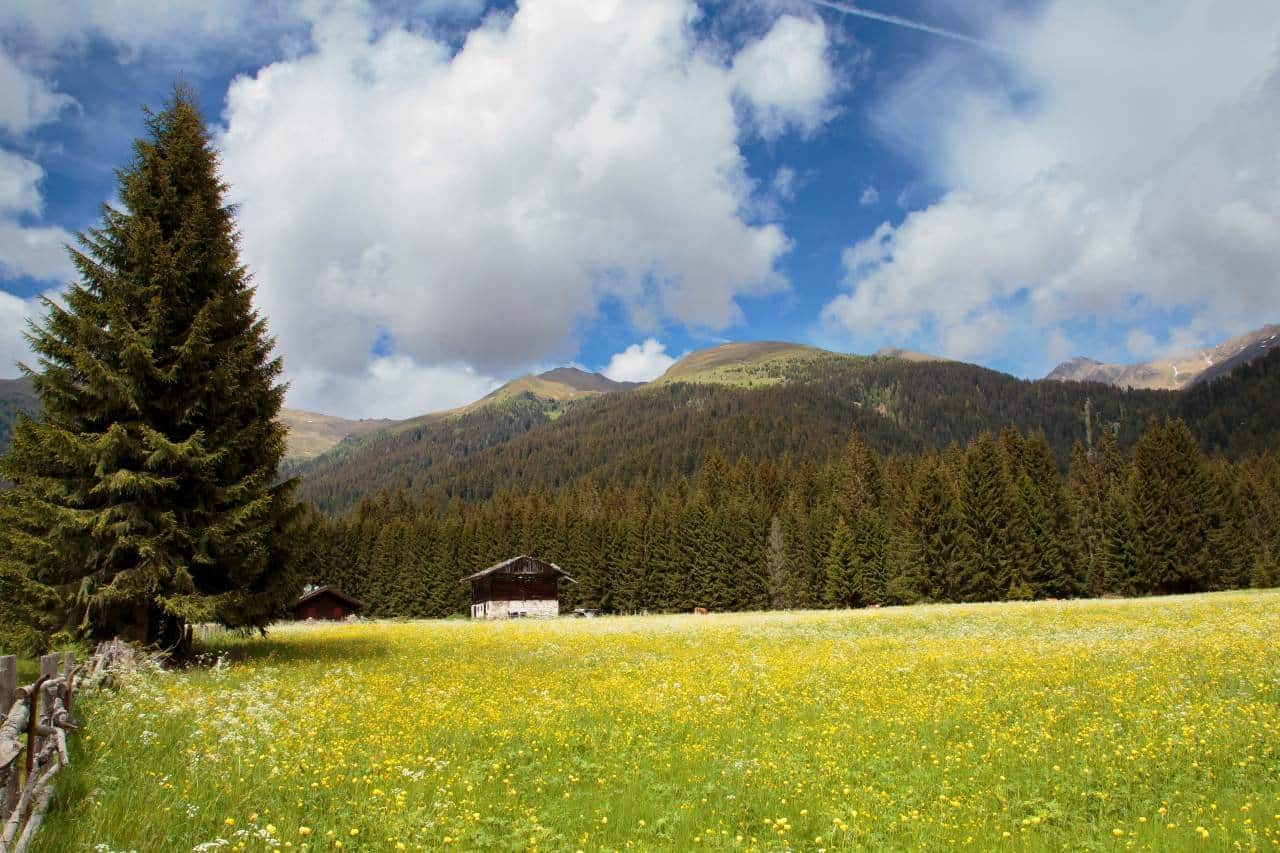
Val Visdende
Finally, San Pietro di Cadore is the easternmost municipality in the valley, situated at 1038 meters and surrounded by the peaks of Tre Terze, Monte Curie, Monte Zovo and Peralba. Its hamlets – Mare, Valle, Presenaio and Costalta – enrich its human and landscape heritage. Once called “Colle” or “Oltreoterino” because of its location across the Piave River, San Pietro retains important historical traces. The center houses the Poli – de Pol palace, while at Mare stands the splendid Villa Poli – de Pol – Sammartini, considered the northernmost Villa Veneta in Italy. The Gothic church of St. Peter the Apostle in the center reflects the typical Comelicense style, while in the hamlet of Presenaio there is a mixture of styles between Gothic and Classicism. The hamlet of Costalta is a rare gem: built entirely of wood and decorated with wooden sculptures by local craftsmen, it houses the Casa “Angiul Sai” Ethnographic Museum, where you can breathe in the daily past of these high lands.
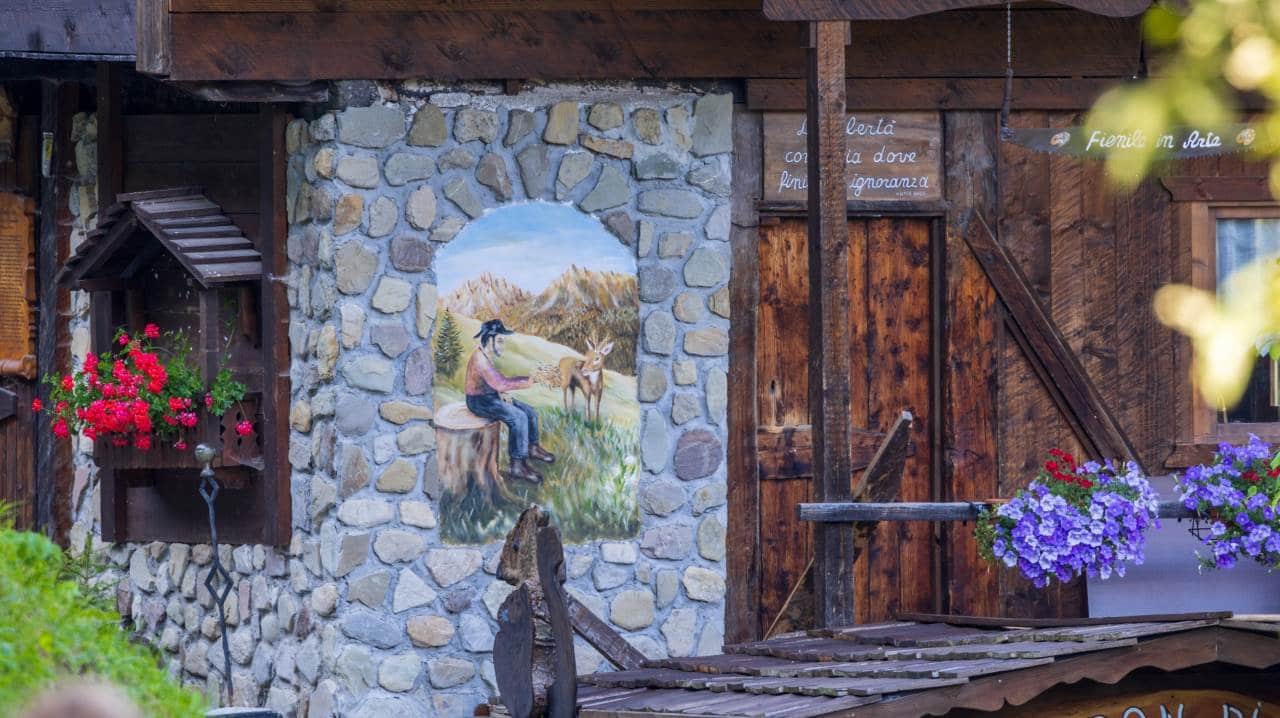
Costalta of San Pietro di Cadore
Val Comelico is much more than just a mountain destination: it is a place of the soul, where time seems to slow down to make room for the essential. In every village you can breathe the memory of an ancient and proud alpine civilization, capable of handing down knowledge, traditions and authentic lifestyles. Nature dominates unchallenged, but it gently welcomes those who know how to listen to it. Whether it is walking a path through the Dolomites, observing the works of art hidden in a small church, or simply enjoying the flavors of the local cuisine at a village festival, every experience in Val Comelico becomes a return to the roots, an intimate encounter with the purest essence of the Italian mountains. It is a valley to be experienced slowly, with respect and wonder, to discover the deep authenticity that makes it unique, reserved, yet unforgettable.
Cover photo with view of Comelico Superiore




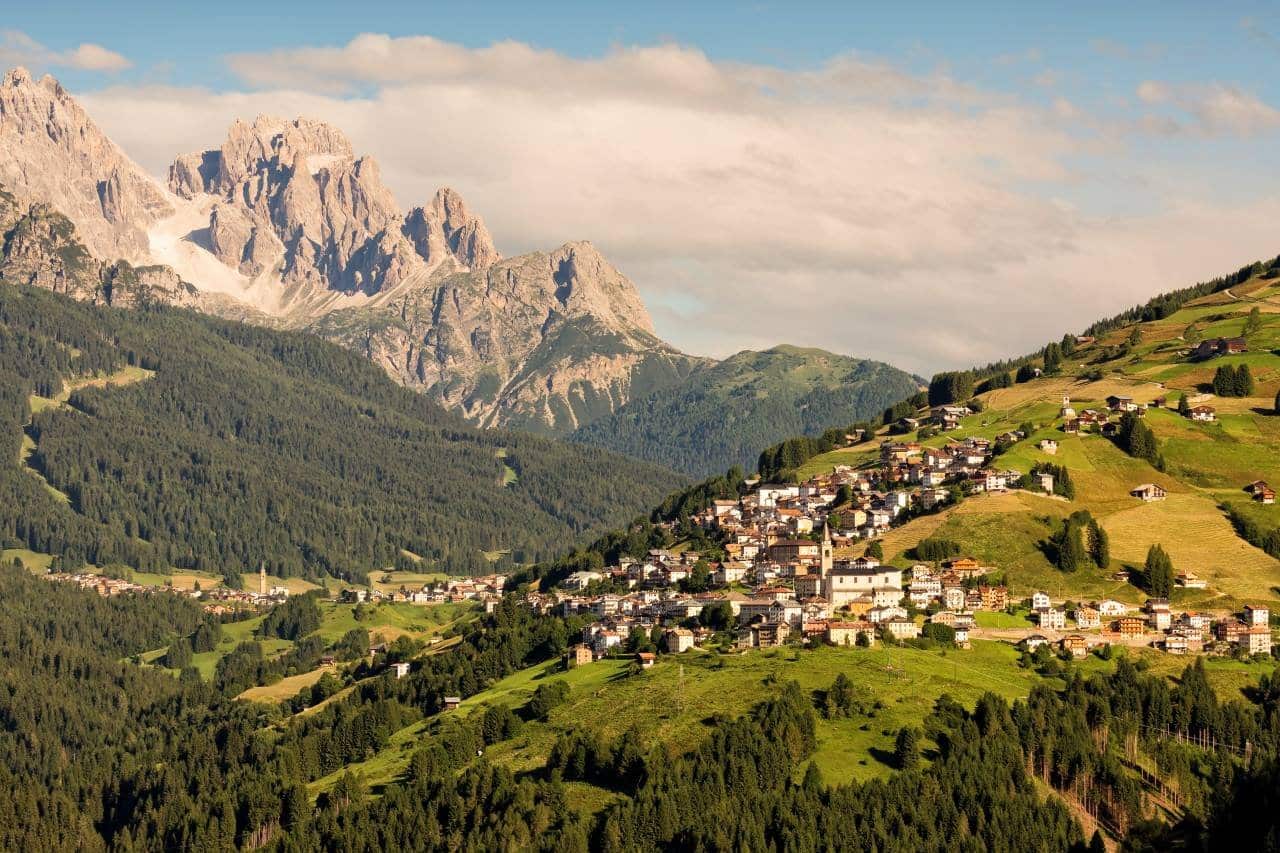
0 Comment